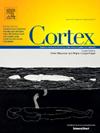颜色与熟悉的面孔识别无关:来自事件相关脑电位的证据
IF 3.3
2区 心理学
Q1 BEHAVIORAL SCIENCES
引用次数: 0
摘要
熟悉人脸识别是基于已知人脸的图像不变表示,可以从高度可变的实例中激活。虽然这种表示的存在是公认的,但不太清楚其中存储了哪些具体信息。在这里,我们研究了颜色,更具体地说是色调和饱和度,是否有利于激活熟悉的面部表征。在一系列的三个实验中,我们在立即重复启动范式中使用事件相关脑电位(ERPs)。在所有三个实验中,我们都观察到明显的ERP启动效应,当启动物和目标物之间的身份重复时,相对于非重复条件,在目标启动后大约220毫秒开始,枕颞通道的负波幅更多。在实验1中,这些ERP重复效应在颜色和灰度启动物上高度相似。这一发现在实验2中得到了重复,实验2使用空间低通滤波的素数来减少高空间频率的身份线索。最后,实验3中的素数面被呈现为反转的色调和饱和度值。再一次,与自然颜色的脸相比,ERP重复的效果非常相似。这些发现表明,颜色信息并不是有益的,实际上在很大程度上与面部识别处理无关。因此,我们得出结论,熟悉的面孔表征不包含身份特定的颜色信息。本文章由计算机程序翻译,如有差异,请以英文原文为准。
Colour is irrelevant for familiar face recognition: Evidence from event-related brain potentials
Familiar face recognition is based on image-invariant representations of known faces which can be activated from highly variable instances. While the existence of such representations is well-established, it is less clear what specific information is stored in them. Here, we examined whether colour, and more specifically hue and saturation, is beneficial for activating familiar face representations. In a series of three experiments, we used event-related brain potentials (ERPs) in an immediate repetition priming paradigm. In all three experiments, we observed clear ERP priming effects, with more negative amplitudes at occipito-temporal channels when identity was repeated between prime and target, relative to the non-repetition conditions, starting approximately 220 msec after target onset. In Experiment 1, these ERP repetition effects were highly similar for colour and greyscale primes. This finding was replicated in Experiment 2, which used spatially low-pass filtered primes to reduce high spatial frequency identity cues. Finally, prime faces in Experiment 3 were presented with reversed hue and saturation values. Again, ERP repetition effects were highly similar as compared to naturally coloured faces. These findings suggest that colour information is not beneficial, and indeed largely irrelevant for facial identity processing. We therefore conclude that familiar face representations do not contain identity-specific colour information.
求助全文
通过发布文献求助,成功后即可免费获取论文全文。
去求助
来源期刊

Cortex
医学-行为科学
CiteScore
7.00
自引率
5.60%
发文量
250
审稿时长
74 days
期刊介绍:
CORTEX is an international journal devoted to the study of cognition and of the relationship between the nervous system and mental processes, particularly as these are reflected in the behaviour of patients with acquired brain lesions, normal volunteers, children with typical and atypical development, and in the activation of brain regions and systems as recorded by functional neuroimaging techniques. It was founded in 1964 by Ennio De Renzi.
 求助内容:
求助内容: 应助结果提醒方式:
应助结果提醒方式:


